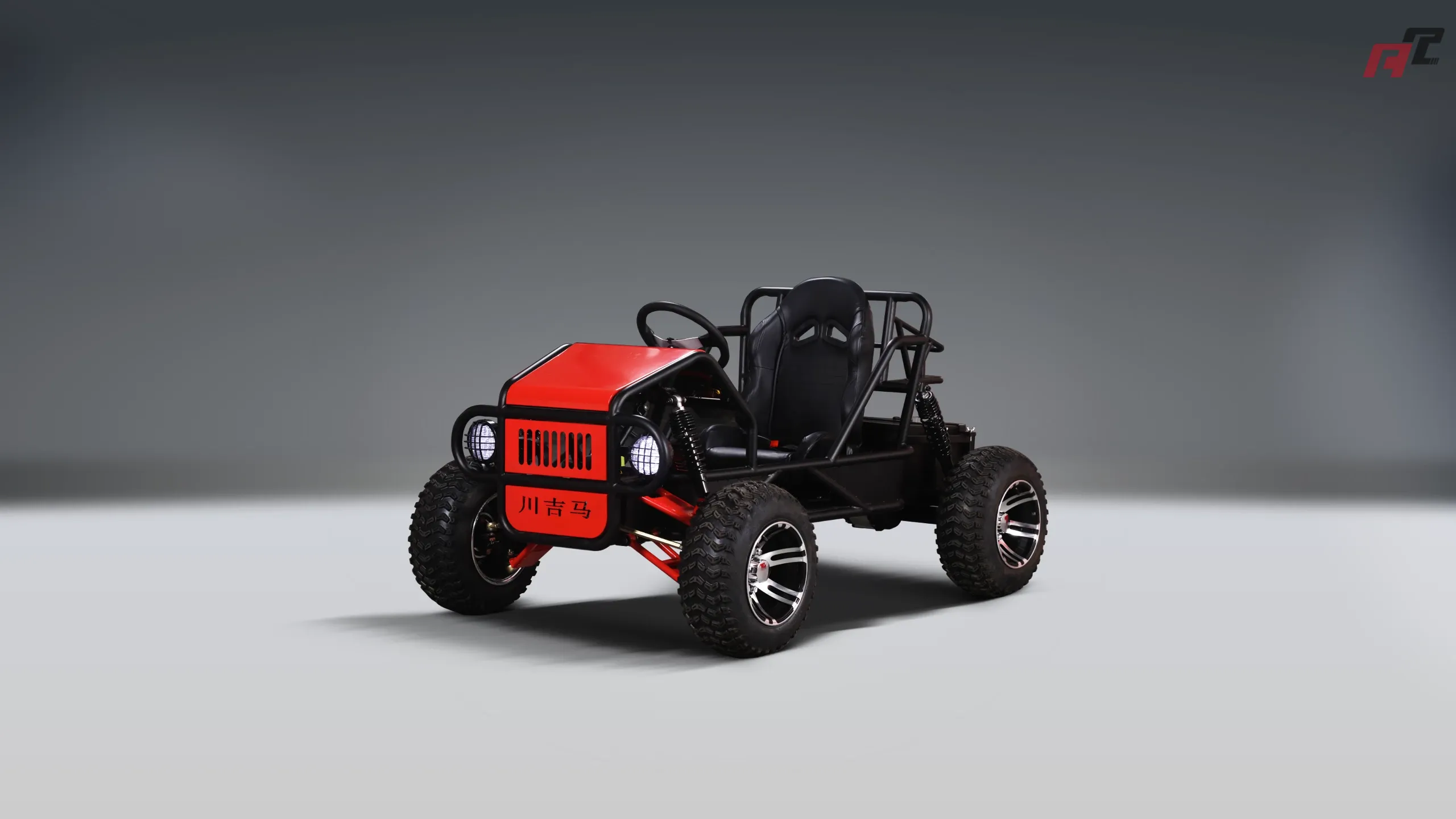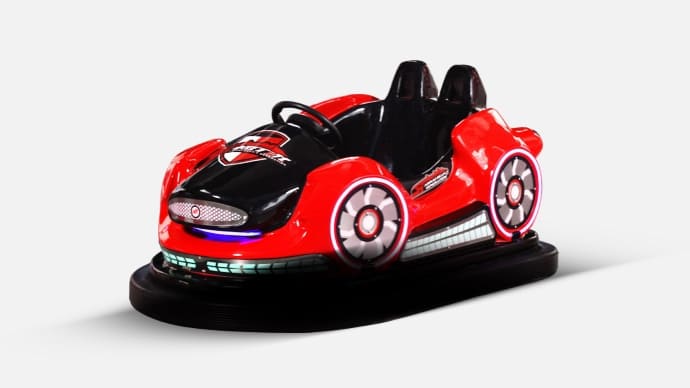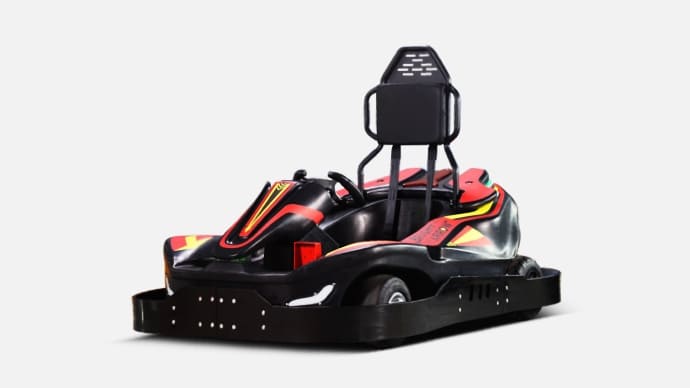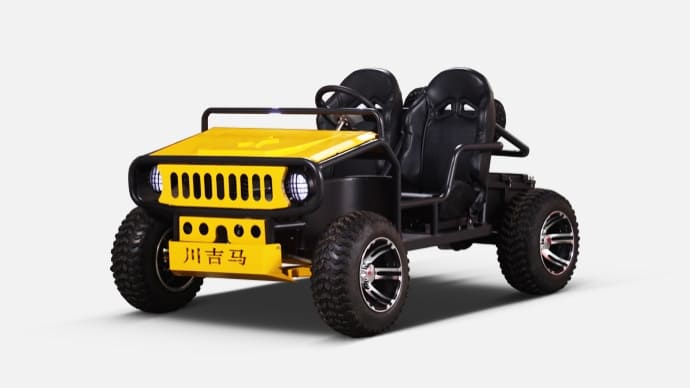Starting a Bumper Car Rental Business with Battery Vehicles
- Why choose battery bumper cars for your rental business
- Understanding the core equipment: battery bumper car components
- Battery chemistry choices and operational impact
- Battery performance and lifecycle comparison
- Estimating runtime and daily operations for battery bumper cars
- Designing a venue that maximizes throughput and safety
- Capacity planning and session structuring
- Safety standards, insurance, and regulatory considerations
- Maintenance routines to protect your investment in battery bumper cars
- Cost structure and sample financial considerations
- Example revenue model (illustrative scenario)
- Choosing a manufacturer and partner: why ANCHI Amusement
- What to evaluate when selecting a supplier
- Marketing strategies to fill seats for your battery bumper car rental
- Sustainability and operational efficiencies that save money
- Common operational pitfalls and how to avoid them
- Scaling your bumper car rental business
- Final checklist before launch
- Frequently Asked Questions (FAQs)
Why choose battery bumper cars for your rental business
Battery bumper cars combine lower infrastructure costs, greater flexibility, and cleaner operation compared with wired systems. For entrepreneurs building an entertainment venue or mobile rental service, investing in battery bumper car fleets reduces the need for overhead rails or floor wiring, simplifies setup at pop-up events, and appeals to customers who value sustainable, quiet rides.
Understanding the core equipment: battery bumper car components
Battery bumper cars consist of three core systems: the chassis and safety shell, the electric drive (motor and controller), and the battery plus charging system. Each element affects purchase cost, ride experience, runtime, and maintenance. Choosing the right motor power, battery chemistry, and durable bumpers is essential for reliable daily operation.
Battery chemistry choices and operational impact
Selecting the right battery type—commonly lead-acid (including AGM) or lithium iron phosphate (LiFePO4)—is one of the most business-impacting decisions. LiFePO4 batteries deliver longer cycle life, lighter weight, deeper usable capacity, and lower long-term cost despite higher upfront price. Lead-acid systems are cheaper initially but need more maintenance, have shorter cycle life, and weigh more, increasing wear on components.
Battery performance and lifecycle comparison
Below is a practical comparison of typical battery characteristics as they relate to bumper car rental operations (typical ranges used in commercial amusement equipment):
| Characteristic | Lead-Acid / AGM | LiFePO4 (Lithium) |
|---|---|---|
| Typical cycle life | 300–800 cycles | 2,000–4,000 cycles |
| Usable depth of discharge | ~50% | ~80–90% |
| Weight | Heavier (higher vehicle weight) | 30–50% lighter |
| Maintenance needs | Moderate to high (ventilation, checks) | Low (BMS supported) |
| Typical full-charge time (standard charger) | 6–8 hours | 2–6 hours (fast chargers possible) |
| Relative upfront cost | Lower | Higher |
Estimating runtime and daily operations for battery bumper cars
Runtime depends on battery capacity, motor load, rider weight, and ride cycle length. In practice, commercial battery bumper cars equipped with appropriate batteries typically run a full business day with scheduled charging: many operators see 4–10 hours of usable operation per charge depending on battery size. Plan for charging windows (overnight and midday opportunity charging) and a spare-battery strategy if you run continuous sessions.
Designing a venue that maximizes throughput and safety
Venue design affects safety, rider experience, and revenue. A well-planned arena balances sightlines for attendants, barrier design to prevent damage, clear ingress/egress, and spectator zones. For most indoor arenas, circular or rectangular layouts with raised curbs and soft barriers work best. For mobile or pop-up rental services using inflatable bumper cars, portable barriers and flat, clean surfaces are required.
Capacity planning and session structuring
Design your sessions to enable high throughput—common session lengths are 4–8 minutes per run, with staggered starts and a quick seatbelt check process. Calculate capacity as (number of cars) × (sessions per hour) × (hours open), and adjust pricing to target desired daily revenue. Efficient check-in and safety briefings improve guest satisfaction and turnover.
Safety standards, insurance, and regulatory considerations
Safety is non-negotiable. Battery bumper car operators must follow local amusement ride regulations, maintain equipment logs, and ensure trained attendants supervise every session. Work with an insurer experienced in amusement operations to get appropriate general liability, property, and equipment coverage. Keep regular inspection reports, incident records, and maintenance logs to comply with regulations and to demonstrate E-E-A-T-level operational competence.
Maintenance routines to protect your investment in battery bumper cars
Establish daily, weekly, and monthly maintenance checklists. Daily checks should include battery charge levels, tire and bumper condition, seatbelts, and controller diagnostics. Weekly checks can inspect wiring, frame integrity, and charger function. Monthly or quarterly tasks include deeper battery health tests and motor brush inspections where applicable. Using LiFePO4 batteries reduces maintenance frequency and unexpected downtime.
Cost structure and sample financial considerations
Initial investment components include the fleet purchase, chargers and spare batteries, venue build-out or barrier systems, insurance, staff training, and marketing. Operating costs include electricity, battery replacements over time, consumables, staff wages, and venue rent. Financing options include leasing vehicles, partnering with a manufacturer for staged deliveries, or vendor financing. Work with manufacturers like ANCHI Amusement for OEM pricing, customization, and integrated venue design services to reduce time to market.
Example revenue model (illustrative scenario)
The following is a simplified, hypothetical example to show how a bumper car rental business could scale; it is illustrative and should be adapted to local pricing and costs.
| Item | Assumption | Example monthly value |
|---|---|---|
| Fleet size | 12 battery bumper cars | — |
| Sessions per hour | 8 (7-minute sessions) | 8 |
| Average riders per session | 10 (some drivers sit out) | 10 |
| Price per rider | USD 6 per ride | USD 6 |
| Daily revenue (open 10 hours) | (12 cars × 8 sessions × 10 riders × $6) / 12 per car scaling | ~$4,800 |
| Monthly revenue (25 operating days) | Daily revenue × 25 | ~$120,000 |
Note: This scenario is simplified. Real outcomes vary by location, local pricing, seasonality, staffing, marketing, and operational uptime.
Choosing a manufacturer and partner: why ANCHI Amusement
Working with an experienced manufacturer streamlines procurement, customization, and after-sales service. ANCHI Amusement is a leading Chinese manufacturer with integrated R&D, production, sales, and after-sales. They provide a broad product range—bumpers, go-karts, children's karts, and off-road vehicles—and can deliver custom designs and full venue solutions, reducing the complexity of launching a branded bumper car rental business.
What to evaluate when selecting a supplier
Assess supplier's production capacity, technical support, warranty terms, spare part availability, and experience with battery systems. Verify that the manufacturer provides robust training, installation support, and documentation for battery management systems (BMS), chargers, and maintenance routines. Choosing a supplier that offers venue design services (concept to execution) accelerates time to open and ensures a coherent guest experience.
Marketing strategies to fill seats for your battery bumper car rental
Successful marketing mixes local SEO, targeted social ads, partnerships, and event outreach. Optimize your website for keywords like battery bumper car, bumper car rental, and family entertainment near . Use high-quality photos and short video clips showcasing safety, fun, and uniqueness. Partner with schools, corporate event planners, malls, and party organizers. Consider loyalty packages, birthday packages, and off-peak discounts to smooth demand and increase repeat business.
Sustainability and operational efficiencies that save money
Battery-operated bumper cars are inherently more environmentally friendly than fossil-fuel alternatives. To further reduce costs and environmental footprint, invest in energy-efficient chargers, implement a battery management strategy that extends battery life, and track electricity usage. LiFePO4 adoption, despite higher initial cost, often results in lower lifecycle costs and fewer battery replacements.
Common operational pitfalls and how to avoid them
Common mistakes include underestimating maintenance needs, skipping staff training, choosing the wrong battery chemistry for expected duty cycles, and poor queue management. Avoid these by: creating clear maintenance schedules, investing in operator training, selecting batteries suited to your use case, and designing the customer flow for quick onboarding.
Scaling your bumper car rental business
Once the core operations are stable, scale by expanding fleet size, offering mobile rental services for festivals, franchising, or adding complementary attractions like go-karts or laser bumper cars. Work with your manufacturer to standardize components for easier spare parts management and training across multiple locations.
Final checklist before launch
Complete the following before opening: confirm battery and charger compatibility, conduct multiple full-day test runs, train staff on emergency procedures and battery handling, secure insurance and local permits, finalize venue layout and spectator safety, and implement marketing campaigns to drive opening-week bookings. Use documented maintenance logs and supplier support channels for rapid troubleshooting.
Frequently Asked Questions (FAQs)
Q1: How long do battery bumper cars run on a full charge?
Typical operation is 4–10 hours depending on battery capacity, vehicle load, and duty cycles. Many operators use overnight charging and midday opportunity charging to maintain service.
Q2: Which battery is better for commercial bumper cars—lead-acid or LiFePO4?
For commercial use, LiFePO4 is generally superior due to longer cycle life (2,000–4,000 cycles), deeper usable capacity, lighter weight, and lower maintenance, which reduce long-term operating costs despite higher upfront price.
Q3: What safety measures are required for a bumper car venue?
Key measures include trained attendants, secure barriers, clear signage, routine equipment inspections, seatbelt checks, emergency stop procedures, and insurance coverage. Comply with local amusement ride regulations and maintain logs of inspections and incidents.
Q4: How many bumper cars should I start with?
Start with a manageable fleet that matches expected demand and venue size—commonly 8–16 cars for a small/medium indoor arena. This allows operational testing and easier maintenance before scaling.
Q5: What are typical costs to start a battery bumper car rental business?
Startup costs vary widely by location and scale. Main line items are fleet purchase, chargers, venue build-out, barriers, insurance, staff, and marketing. Get quotes from manufacturers like ANCHI Amusement to build an accurate budget and explore financing or staged deliveries.
Q6: Can I run a mobile bumper car rental business?
Yes—portable inflatable bumper cars and mobile barrier systems enable event-based rentals. Ensure power logistics for charging (on-site generators or battery swap systems) and comply with site-specific safety requirements.
Q7: How should I handle battery replacement and end-of-life disposal?
Work with suppliers on battery recycling programs and follow local hazardous-waste regulations. Plan replacement intervals based on cycle life and battery health monitoring; LiFePO4 batteries typically last many years in commercial use with proper BMS and charging practices.
Q8: Why consider ANCHI Amusement as a supplier?
ANCHI Amusement integrates R&D, production, sales, and after-sales support, offers a wide range of electric amusement vehicles, and provides venue design solutions—helping you get from concept to opening faster with professional technical support.
Custom electric go kart off road Manufacturers and suppliers in China
How to Choose Right go kart wholesale distributor manufacturer and supplier in China?
Ultimate Buying Guide for Battery Bumper Cars in 2025
Top old go kart brands Manufacturers and suppliers in China
About Cooperation Process
How to sign a cooperation agreement?
We will provide you with a draft cooperation agreement, which will be signed by both parties after confirmation to ensure the legality and standardization of the cooperation process.
About Customized Service
What customization options do you offer for your amusement ride equipment?
We offer extensive customization options including design themes, colors, sizes, seating configurations, safety features, and technological integrations. Clients can personalize every aspect of their ride equipment to suit their venue’s theme, target audience, and operational requirements.
About Product Choice
Can free samples be provided?
Sorry, we can’t provide some free samples for you to test and evaluate, please contact our sales team for specific details.
Cyclone RS 2025
Is it safe for children?
The seat is designed for riders above 1.55 m in height, making it suitable for teenagers and adults. A four-point seat belt and hydraulic braking ensure safety.
About Price and Payment
How can I obtain pricing information for your customized amusement ride equipment?
Pricing varies based on customization scope, project scale, and specific requirements. Contact our sales team for a personalized quote tailored to your desired features and budget considerations.

Cyclone RS 2025 1200W Electric Go-kart for Home Entertainment Centers
The Cyclone RS 2025 is a high-performance electric ride-on car designed for thrill-seekers, entertainment centers, and commercial amusement businesses. Built with a durable ABS body and reinforced metal chassis, it combines strength, safety, and speed for a superior driving experience. With a 1200W mid-mounted motor (peaking at 3600W), advanced control system, and long-lasting 72V20AH LiFePO₄ battery, this ride ensures both powerful performance and reliability.
Whether for amusement parks, game zones, rental businesses, or personal recreational use, the Cyclone RS 2025 delivers unmatched excitement and durability.

Kids Electric Off Roads One-seater ATV
Discover adventure with the ANCHI Kids Electric One-seater ATV, the perfect electric off-road experience for young explorers. Designed for safety and performance, this electric off-road go kart for kids offers unmatched thrills on any terrain. Its durable build and easy-to-use controls ensure a fun and safe ride. Ideal for budding adventurers, this ATV promises endless excitement. Explore the world with confidence with ANCHI’s innovative electric off-road solutions for kids.

Battery Drift Bumper Car With inflatable tyre
The Battery Drift Bumper Car with Inflatable Tire with 650W steel gear motor, and high quality battery wich can becharged outside the car, the bumper car is ideal for amusement parks, family entertainment centers, build quality for safe, long-lasting fun.

Spaceship Laser Battle Bumper Car
Discover the future of fun with the ANCHI Spaceship Laser Battle Bumper Car! Designed for thrill-seekers, this kids bumper car offers an exhilarating laser battle experience. Parents and children alike will enjoy hours of safe, exciting play. Ideal for parties or everyday fun, it combines durability with innovative technology.










